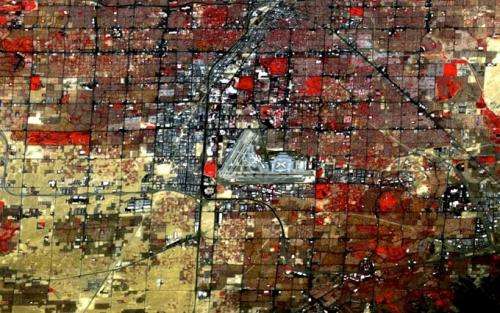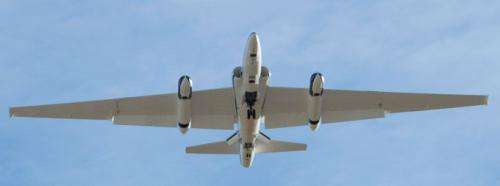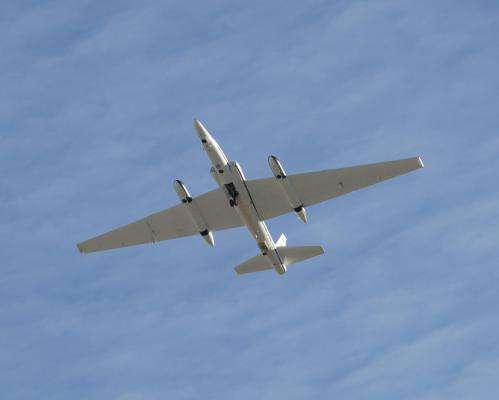NASA ER-2 aircraft continues Earth ecosystem research

A study of Earth's ecosystems and how they function is continuing in Southern California and southern Nevada in June with an early summer flight series using one of NASA's high-altitude ER-2 aircraft. This is the second year of NASA's Hyperspectral Infrared Imager, or HyspIRI, airborne campaign.
The aircraft, based at the NASA Armstrong Flight Research Center's facility in Palmdale, California, carries a suite of instruments gathering data about the health of vegetation in six diverse areas of the two states.
NASA's Jet Propulsion Laboratory developed the Airborne Visible / Infrared Imaging Spectrometer, or AVIRIS. The spectrometer's data span the visible to short wavelength infrared spectrum. The MODIS / ASTER Airborne Simulator, or MASTER, was developed jointly by JPL, NASA Ames Research Center and the Earth Resources Observation and Science Center. MASTER measurements are taken simultaneously in the thermal infrared spectrum.
All flights are conducted seasonally and under cloud-free daylight conditions.
The instruments installed in the ER-2 are a similar sensor technology as those planned for the HyspIRI satellite. Those sensors will help to determine the spectral and thermal characteristics of Earth's ecosystems.


Provided by NASA


















